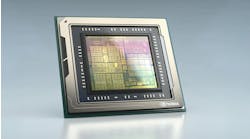In today’s commercial vehicles the base level of connectivity is GPS tracking, accelerometer information, and information emitted from truck engine control modules. Developments in technology have opened the doors not only for vehicle-to-vehicle (V2V) and vehicle-to-infrastructure (V2I) communication, but to provide fleet managers with a direct view into their assets to better determine best overall operating procedures. And as 3G networks are being decommissioned through the rest of this year, making room for higher 4G and 5G bandwidth capabilities, there will be even more opportunities for fleets and connected vehicle technology moving forward. However, uncertainty looms regarding federal policy changes to the safety spectrum.
Over the next decade, Mark Doughty, president and CEO of PrePass Safety Alliance, projects that most vehicles will have some level of connectivity, with added complexity and real-time engagement. PrePass Safety Alliance delivers V2I safety technologies for the trucking industry and works in collaboration with both public and private entities.
“The future is pretty phenomenal,” Doughty said during a virtual CV Tech Quick Chat event. “I think what's going to resonate is, what is that language that we're going to speak? How does that permeate into our commercial motor vehicles, as well as our passenger vehicles? How do we have languages that are backward compatible? How far back should they be backward compatible? I think those are some of the interesting things that we're going to see in that 10-year period.”
According to Doughty, the evolution and the acceleration in terms of the technology are there, but there are uncertainties surrounding policy and deployment.
Much of that uncertainty, Doughty pointed out, is predicated on the Federal Communications Commission’s November 2020 ruling, which split the safety spectrum. The FCC plan takes more than half of the radio spectrum that was previously designated for vehicle-to-everything (V2X) transportation safety communications and reassigns those airwaves to WiFi and other unlicensed uses. Specifically, the new plan designates 45 megahertz for unlicensed uses and the 30 megahertz for transportation safety using cellular V2X technology.
“The 5.9 gigahertz safety spectrum had been preserved going back to 1999, and, unfortunately, the FCC had not been providing guidance which had been sought after by both commercial as well as passenger vehicle organizations and DOTs,” Doughty explained, adding that when the FCC came out with the November ruling, there was initially 75 megahertz allocated for connected and autonomous vehicle technology.
“Now, unfortunately, that has been split and only 30 [megahertz] was preserved,” he said. “The guidance is finally there, but now the question becomes, how can that 30 be utilized? That is one of the challenges that is going to be presented with that complex decision that was made by the FCC.”
Transportation industry stakeholders, including the American Trucking Associations and the American Association of State Highway and Transportation Officials, staunchly oppose the FCC’s move and have pushed back, saying the 5.9 GHz band has been part of the spectrum reserved for “life-saving” technologies. There's a lot of work being done right now to determine if the FCC’s decision is going to stand as it was made last November, Doughty added.
Greater expectations
Regardless of federal policy uncertainties, as the general technology tide rises so do fleet and end-user expectations of the software.
Peter Mitchell, general manager at Verizon Connect, emphasized the importance of leveraging higher 4G and 5G bandwidth to keep vehicles and people connected to improve safety on the job, while increasing commercial fleet revenue overall. The higher bandwidth capabilities provide fleets more opportunity to use advanced video technology.
“Because our users are mobile, 5G, as it rolls out, brings a lot of opportunities to us,” Mitchell explained.
For example, he noted that multi-access edge computing (MEC) brings technology resources closer to the end user. So, data is processed and stored at the network’s edge, meaning it can significantly reduce latency by getting information closer to the vehicle to have more of an immediate impact.
“You’re looking at a stream of video and applying it to really high-end artificial intelligence and machine learning to figure out what’s going on,” Mitchell advised. “While the human mind can determine that a vehicle coming around the other side of a bend is normal, you have to train a computer to understand that is not something that is going to hit you. Rather than offload that into the cloud, where right now all the heavy-duty processors are, 5G and MEC, in particular, will allow us to do that on the edge of the network and give the feedback to the driver.”
When it comes to connected vehicle technology moving forward, Mitchell said 5G opens possibilities with OEMs starting to build some of this technology into their vehicles. To make this truly connected future a reality, however, the networks and artificial intelligence must advance.
“AI and the processing required for it needs to continue to develop, because that allows us to go from knowing what happened in the past to what is happening to what’s going to happen if you don’t change trajectory,” Mitchell explained. “On the regulatory side, data privacy and ensuring AI is used the right way is really important. Data is precious, but it’s perilous if it’s in the wrong hands. It’s like molten gold—you can make some incredible things out of it, but you can get burned very quickly from it if you don’t treat it the way it should be.”
And when asked whether there could be a world in which connected vehicle technology becomes mainstream, but where fully autonomous vehicles do not, PrePass’ Doughty said “it’s highly unlikely.”
“They're cousins, if you will, and they're so intertwined in terms of their capabilities,” he explained. “All of that technology lends itself to the communication to the infrastructure, as well as to other vehicles.”
Doughty also emphasized the importance of looking at the funding available to deploy that V2I communication, while also understanding that in the autonomous world V2V communication capabilities are important. The ultimate buildout of those landscapes, he added, is what will be determined.
“It would not be a natural choice for there not to be some level of connected vehicle activity that would exist,” Doughty said. “The question becomes how much of it.”




